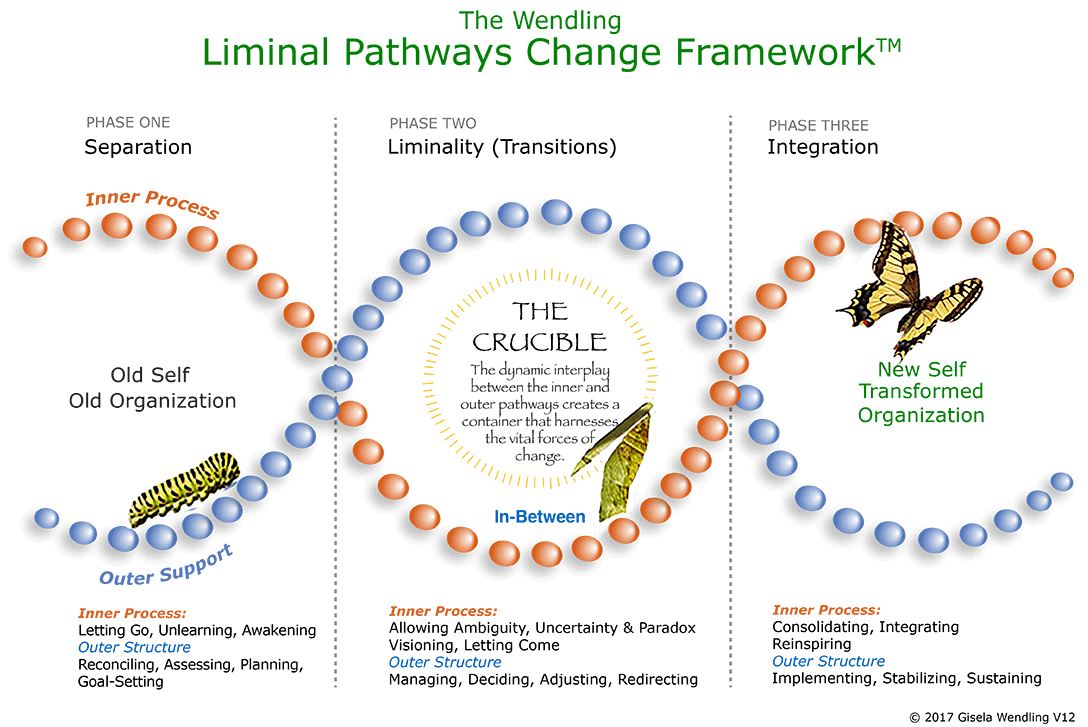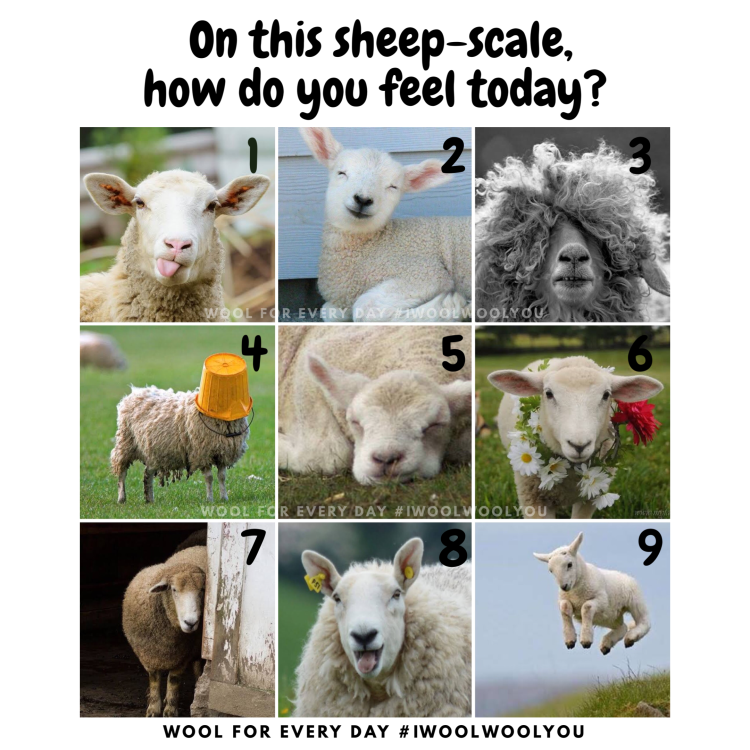Envisioning Organizational Change Online
Oct 25, 2021
Authors: Gisela Wendling Ph.D. and David Sibbet
When COVID shutdowns came in March of 2020, Cal Poly Pomona’s College of Extended University, which had become peripheral to the main colleges, realized it was time to reinvent itself. The rapidly shifting landscape of a new, all-virtual world, trends in lifelong professional development, and increasing demand meant the college needed to align internal and external stakeholders behind a powerful vision. The process was led by the entrepreneurial interim dean, Erik Rolland, a long-time Grove client, and facilitated by Gisela Wendling, Ph.D., and David Sibbet.
The above Grove Storymap® captures the vision. Although some elements of that vision may still evolve, the interim dean and his team are now moving through final approvals, securing funding and launching implementation activities.
Metaphors Make Meaning
Often the core challenge for an extended-studies organization is to envision how to flexibly partner, design and deliver programs that meet the needs of individuals as well as local, national and global industries. Visualizing a variety of metaphors that would capture these dynamics was an important part of the vision scenarios we explored during stakeholder meetings.
The suggestion that the new college would be like a roundabout, with people entering from different directions but being able to move flexibly, took hold. The campus, which actually has such a roundabout, allowed us to quickly and creatively fill in the graphic details along with the major vision themes and subthemes.
Envisioning Change Through Online Connection
For years The Grove has used a variety of stakeholder-engagement activities to help clients create a common story and vision. Co-designing our approach with the project’s design team, we combined highly interactive exchanges exploring organizational strengths and challenges with marketplace trends and a wide range of future scenarios. We captured emerging content online using Mural, a flexible digital whiteboard program, while design team members facilitated breakout meetings with stakeholders. Dialogue among university stakeholders forged a strong connection and enabled them to recognize opportunities for the extension unit and the university as a whole, leaving many energized and inspired at the end of the meetings.
Design Teams Are Key and Are the First to Enter the Change Journey
A committed design team is essential to empowering a system-wide change. It not only designs the path forward but is also the first to navigate the complex and ambiguous territory of an organization’s change process. Although pivotal conversations with a design team are commonly conducted offsite (with overnights and dinners), we found that these conversations can also happen virtually, especially when the need is urgent, and the commitment is felt.
This project design team had about a dozen two- to three-hour online meetings preparing for and working with the outcomes from a series of larger and longer stakeholder meetings. Despite meeting virtually, team members became very close, developed a new level of trust, and learned to appreciate the unique pace of moving through change for each individual.

A Framework Creates a Common Language and Orientation
Using the Wendling Liminal Pathways Change Framework™ as an assessment tool, we asked participants at critical turning points, “Where do you see yourself, your team, and your organization on the Liminal Pathways trajectory at this time?” This led to rich exchanges about what was needed to bring the whole organization along as the framework became a common language for their organizational journey.
Though the framework depicts three distinct phases, each one brings with it its own challenging and generative tensions while transitions among them can be experienced as fluid. The transition phase can feel especially like being in a crucible in which our old assumptions and mental models, our outdated aspirations, and our emotional attachments can dissolve. In well-designed and facilitated meetings that are crucible-like, we can creatively tap into our ability to perceive new possibilities, innovate and consciously transition from one phase to the next. We purposefully design meetings to help groups transition consciously from phase to phase. This allows the group to feel oriented in the often ambiguous and confusing experience of navigating change.
A Receptive Leader Can Empower Breakthrough Thinking
Erik Rolland, the interim dean, is unusually good at finding value in whatever people offer. His insistence on hearing from everyone not only enrolls people in the change but allows the group to wrestle with the real issues in front of it. He also freely shares his big-picture thinking and real data from the field. For this project, he was involved in agenda designs and consultation on drafts of the vision map, enabling innovative thinking throughout the process and making progress in the right direction. Erik’s commitment to providing a reliable project infrastructure and process design (Outer Support/Structure in the Liminal Pathways Framework) brought stability to an often unsettling and uncertain change journey.
Virtual Stakeholder Involvement Is Not Only Possible but Sometimes Easier
It takes a great deal of work to gather diverse stakeholders in a face-to-face meeting, especially if they are as dispersed as they were at Cal Poly. These meetings allowed faculty and staff to work across academic silos, enabling industry leaders to explore emerging trends and new opportunities. Using the breakout room option in Zoom, affinity groups were able to dive more deeply into specific topic areas.
Visual Documentation Provides Continuity in Thinking
The Grove’s visual templates, imported into Mural, provided online panoramas that were easy to summarize and review as the process progressed. Mural and Miro allowed the use of complex graphics, and further review was enhanced by the creation of PDF reports after each step of the process.
A Facilitation Team Supports Online Flexibility
With Gisela as lead facilitator and David as lead documenter, both functioning as process consultants, they could handle the inevitable complexity of online work—one reading chat, the other asking questions, one checking email to see who had sign-on issues, the other greeting people, and so forth.

Personal Check-Ins Bring People Closer
Each session began with a creative check-in. One of the design team’s favorites was the sheep scale. Humor and laughter are critical offsets to Zoom fatigue.

Next Steps and Takeaways Create a Sense of Accomplishment
Creating to-do lists and checking them is essential to good project management, but it is easy to forget there are real people with real experiences behind the screen. We use the practice of takeaways at the end of every meeting to provide closure and meaning and to give an opportunity for all the participants to connect with the value of the meeting.
One of the best conclusions was receiving Erik’s reflection at the end of this process:
“Strategic change in organizations is about changing people’s behavior and attitudes as much as it is about changing processes and procedures. In order to successfully facilitate change, you need a process that is both blame-free and cognizant of the mental struggle of letting go and finding ways to do things better. The unique support you get from The Grove is an intentional process in which people are engaged from the bottom up and can consider both their fears and their dreams, which allows them to let go of old practices and embrace, own, and get excited about the change.”
Erik Rolland
Cal Poly Pomona
Provost’s Associate for Strategic Transformation
Dean of College of Business & College of Professional and Global Education
Are you interested in getting support with designing and leading change in your organization, for your clients, or for larger regional contexts? We can help you make sense of the complexities that change brings. Contact us at [email protected] to discuss how we can craft a solution to meet your specific needs.
